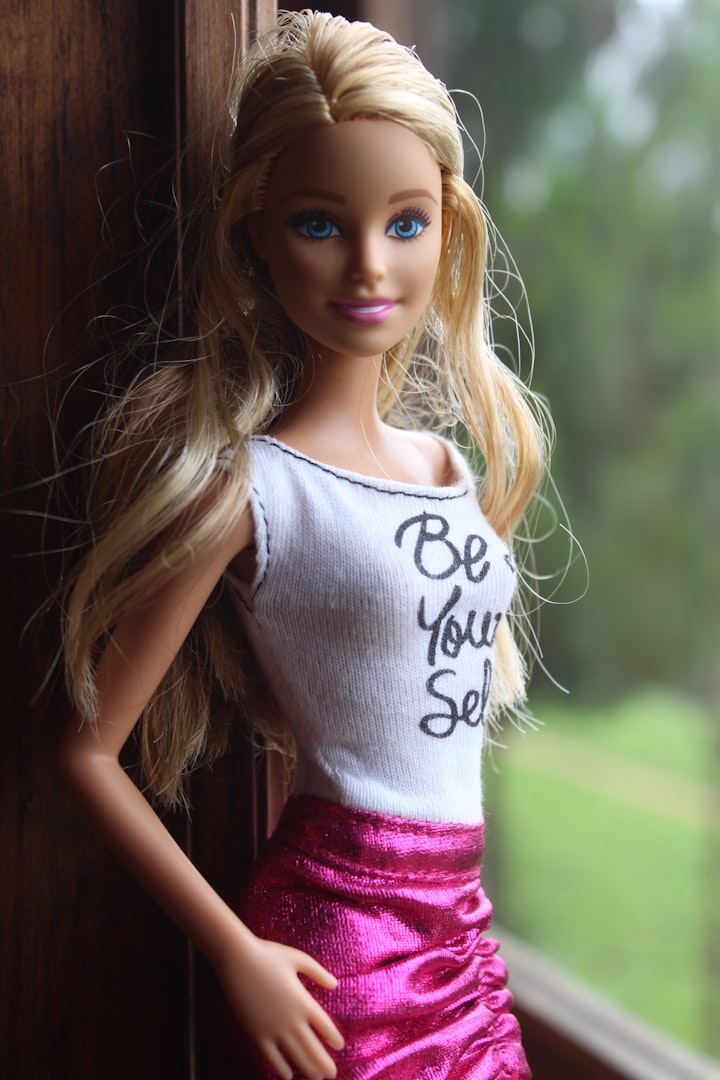Polish Barbie and a Deeper Authenticity
. . . and the things I thought I wanted

Growing up, it was easy to know the things I thought I wanted: a dog of my own, pointy crayons, stuffed animals, a diary with a lock and key, and real Barbie paper dolls. Of course, I look back on this grand desire of wanting authentic Barbie paper dolls and I know why. Who wouldn’t? This wonder woman with the impossible figure, perfect hair, and such a vast array of careers that she alone could blow up LinkedIn? Barbie was, and very well might still be, the paragon of Cool and Smart. A model of Beauty and Sophistication. Fun and Adventure. Confident and Talented. What’s not to want?
Barbie had the cutest clothes and shoes. Maybe it was her easy and stylish wardrobe that so drew me into her world of racy pink Corvettes and hip pool parties. And Barbie must have been hella wealthy. How else could a girl be perpetually unemployed and always ready to party? I could only presume that she was a trust fund child who knew exactly what to do with an American Express Centurion card. Her Funhouse did not come with bundles of Barbie-size funny money stashed in some safe behind a painting, but we could all imagine her taking a bath in a tub of $100 bills. Barbie was like a unicorn to me: a little girl growing up on the North Dakota prairie.
To assist me in realizing the Real Barbie Paper Doll Dream, my big sisters made us our own version of Polish Barbie. These facsimiles may have failed miserably in Barbie’s Cool Factor, but they made up for it exponentially in the Effort Department. While Mattel was not about to go busting down our door to rob us of our yet-to-be-patented North-Dakotan version of Barbie (a doll that swore freely in Polish, wore galoshes rather than kitten-heels, and whipped up funeral hotdish in her Barbie kitchen to take to the church basement), the Dakota dolls earned an A+ in creativity and fine craftsmanship.
The dolls were made by “the big girls” – what I called my big sisters growing up. They meticulously cut out desirable models featured in catalogs and the ads from the Sunday paper, which were then glued to light poster board. I remember the big girls using the light cardboard insert that came packaged with my father's new shirts or the empty cereal boxes from the kitchen. Gluing the models to the cardboard was cause for concentration. It involved using the just-right amount of glue to prevent bubbling and wrinkling in the wrong places. We're talking Knock-Off Barbies here with the end goal of Barbie Perfection, so the dolls could not afford an unseemly bubble or wrinkle in an inappropriate place.
After the glue had thoroughly dried, the laborious task ensued of cutting out the outlines of the dolls and the tricky spaces between the arms and the body for those magazine models who held their hands on their hips, their elbows pointing away from their torsos.
This was all done with school scissors and a pair of dull sewing shears that my mother kept by her sewing machine. We could not afford fancy craft knives, and our parents were not about to entrust the big girls with a box cutter. They used what they had, and I have to really hand it to them for keeping a steady hand. While it would have been much easier to have selected dolls with their arms glued to their sides or completely free from their bodies, my sisters were committed to their craft and kept the sassy, arms-akimbo models alive in our collection.
Next came the clothes. The dolls were traced to typing paper, and then cute dresses and pant suits were drawn and colored. My sisters had this process down. I suspect that there was a fair measure of failed attempts before they learned to put the doll face down on the paper so that the tracing lines could not be seen in the dress or top. Again, those arms-akimbo spaces had to be cut out carefully from all fashions. I now know why so many of Polish Barbie’s outfits were sleeveless – thus removing the necessity of cutting those spaces out of the fragile paper.
And all I can say is a resounding Chapeau! to my sisters for learning how to place the fold tabs just so, ensuring that the dolls' outfits would stay put and not just fall off. I am sure that Ken would have appreciated the latter consequence, but the big girls were fashionistas who wanted their designs to remain on the dolls. It was a lesson in critical thinking and trial-and-error. I remember when one of my sisters learned that if you cut the fold tabs with an added angle, the clothes stayed on even better. I fully expected this sister to go on and become a Mattel engineer, given her talents in the “tab department” on the assembly line.
The big girls made faux-mink stoles and evening gowns. Gingham dresses and sweater sets. They made outfits for a picnic and for our repetitive First Dates with Ken. All I can say is Ken must have had a lot of imagination to create the illusion of a first date over and over and over. Either this, or Barbie had suffered amnesia as a result of crashing her pink convertible. Still, either one of these options explains why Barbie didn't stray far from Ken. Ken managed to keep the relationship alive.
Ultimately, the dolls cut from the ads became the inspiration for my sisters moving on in the design world and creating their own paper dolls from scratch. These dolls included Barbie's trademark ponytail swirl and other popular hairdos at the time. They drew faces on the dolls and some cleavage that would peek out of an evening gown.
As I recall, some of the faces represented some of Modigliani's or Picasso's earlier work, but I didn't care. And despite knowing that these dolls were a far cry from the delicate-featured authentic Barbie paper dolls, they certainly made me feel included – like I was part of The Big Girls Club – which was all about being creative with what we had and not focusing on what we didn't have.
Looking back, I wonder if I didn't intuit a Deeper Authenticity in the paper dolls that the big girls made. What started out as Barbie knock-offs became their own inimitable style, their own brand of North Dakotan swank. I remember them discussing which models from the ads would make a better sample or how to make a more tab-friendly swimsuit. Perhaps it was the fashion discussions or watching their faces filled with preoccupation as they cut and traced that drew me in. Perhaps it was the girl-power camaraderie to which they allowed me, the littlest sister, entrance.
I remember the dolls' edges becoming mildly curled from an over-zealous pencil tracing the dolls one too many times. Once the edges on a doll began to curl, the clothes didn't stay on so well . . . so new dolls needed to be made. And I, being the youngest and most lacking in fine motor skills, received their cast-off dolls. Talk about a win-win.
My preference, if given the choice now? I would love to come across some of the paper dolls that my sisters made. Even though the dolls are gone, they live in my memory and in the deep admiration I hold for my big sisters who knew how to get creative when resources were scanty.
I thought I wanted the fancy Mattel paper dolls that every other little girl in the consumer market had . . . but what I really wanted, and received, was the love from the big girls who were generous enough to include me in their World of Fashion and Creativity. Thank you, big sissies. I remember your creative kindness. You were "the ultimate" in my life growing up. And you still are.
About the Creator
Kennedy Farr
Kennedy Farr is a daily diarist, a lifelong learner, a dog lover, an educator, a tree lover, & a true believer that the best way to travel inward is to write with your feet: Take the leap of faith. Put both feet forward. Just jump. Believe.






Comments
There are no comments for this story
Be the first to respond and start the conversation.